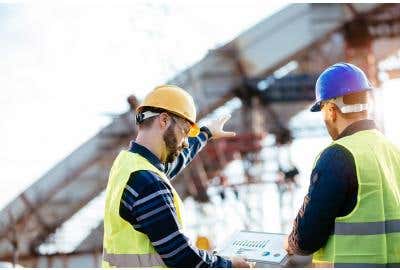Importance of Regular, Updated Safety Training in Construction


Few industries require as much careful attention to safety as the construction field. With workers operating heavy machinery, handling electrical systems, and building and repairing multistory structures, it’s no wonder that regular, updated safety training is required. Plus, as new construction technologies are developed, industry best practices constantly evolve to keep pace. By renewing their training, members of this workforce can stay on top of these practices and apply them as they work. Here, we take a closer look at the benefits that recurring safety training offers for construction employees and employers alike.
Safety Training Benefits
For years, the Occupational Safety and Health Administration (OSHA) has required construction employers to provide safety and health training for their employees. And with the following benefits offered by regular, up-to-date training, OSHA’s mandate is easy to understand.
Awareness boost
One of the largest benefits of regular safety training is that it boosts participants’ awareness of workplace hazards. Before beginning their workday, construction workers must be fully aware of the hazards presented by their job sites. Through regular safety training, they can better anticipate specific workplace dangers, paving the way for hazard avoidance and prevention.
Enhanced communication
Oftentimes, communication is hindered by a lack of understanding. So when members of the construction workforce are regularly, uniformly trained, they’ll be better able to develop action plans, make quick, informed decisions, and keep each other safe.
Accurate documentation
Safety training doesn’t stop at hazard prevention. On the contrary, it also covers what to do if a workplace accident or injury occurs. As OSHA mandates, employers are responsible for keeping accurate records of injuries, illnesses, and fatalities that occur on the job. This not only helps ensure compliance with all applicable standards but also makes it easier to see where your Health and Safety Program may require updates or extra material.
Specialized job success
With so many types of construction jobs out there, many kinds of safety training are available that cover the nuances of different job sites and duties. For example, different hazards exist for workers who perform steel erection, which involves working on single or multistory buildings, bridges, and other steel structures, than for workers employed in road construction or excavation and trenching. Just a few of the specialized construction safety training courses we offer include:
- Subpart R: Steel Erection
- Introduction to Heavy Construction Health and Safety
- Scaffold Safety Awareness for Construction
- Excavation Safety for Construction
- Trenching and Excavation for Construction
- Motorized Mobile Platforms for Construction
- And many more…
Every construction worker needs to receive ongoing training tailored to their job duties and the sites where they work, including safety fundamentals, OSHA’s Focus Four Hazards, and more specialized topics. This way, everyone is well-prepared to look out for their own safety and foster a positive safety culture at work.
Register for One of Our Safety Courses Today
With so many potential hazards to consider when working in the construction industry, it’s critically important that teams receive regular safety training. At ClickSafety, we are an OSHA-approved provider of training courses for all industries. Since 1999, we have offered our student-centered training solutions to more than 10,000 organizations across the world. To learn more, browse our available online courses, call 800-971-1080 to speak with a representative, or contact us online today.

